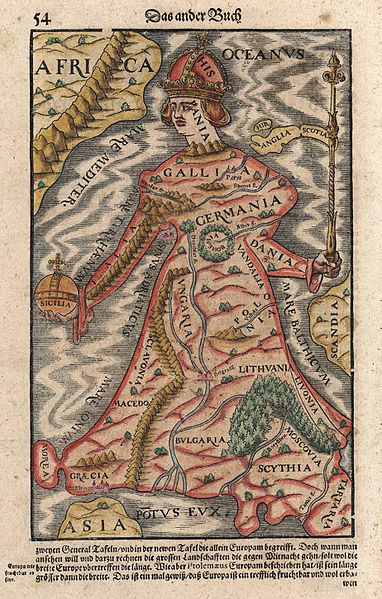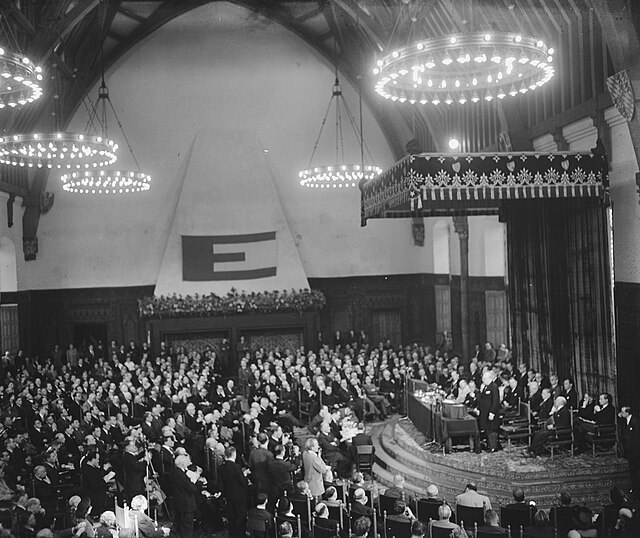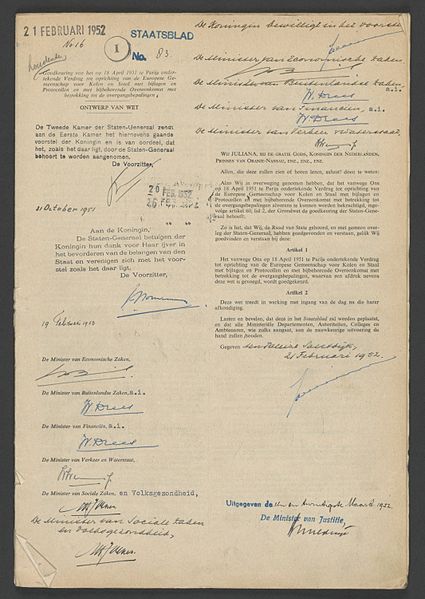History of the European Union
The European Union is a geo-political entity, created in 1993, covering a large portion of the European continent. It is founded upon numerous treaties and has undergone expansions and secessions that have taken it from six member states to 27, a majority of the states in Europe.
Europa regina in Sebastian Münster's "Cosmographia", 1570
After two devastating world wars, the political climate favoured an international unity that could preserve peace in Europe effectively (Hamburg, after a massive Allied bombing in 1943 in the picture).
Winston Churchill (right, during the Atlantic Conference), consistent advocate of continential European integration, later along with his son-in-law Duncan Sandys
Meeting in the Hall of Knights in The Hague, during the Congress of Europe (9 May 1948)
European Coal and Steel Community
The European Coal and Steel Community (ECSC) was a European organization created after World War II to integrate Europe's coal and steel industries into a single common market based on the principle of supranationalism which would be governed by the creation of a High Authority which would be made up of appointed representatives from the member states who would not represent their national interest, but would take and make decisions in the general interests of the Community as a whole. It was formally established in 1951 by the Treaty of Paris, signed by Belgium, France, Italy, Luxembourg, the Netherlands, and West Germany and was generally seen as the first step in the process of European integration following the end of the Second World War in Europe. The organization's subsequent enlargement of both members and duties ultimately led to the creation of the European Union.
Former headquarters of the High Authority in Luxembourg
Image: Oprichtingsverdrag EGKS NL Ha NA 2.02.20 10123






